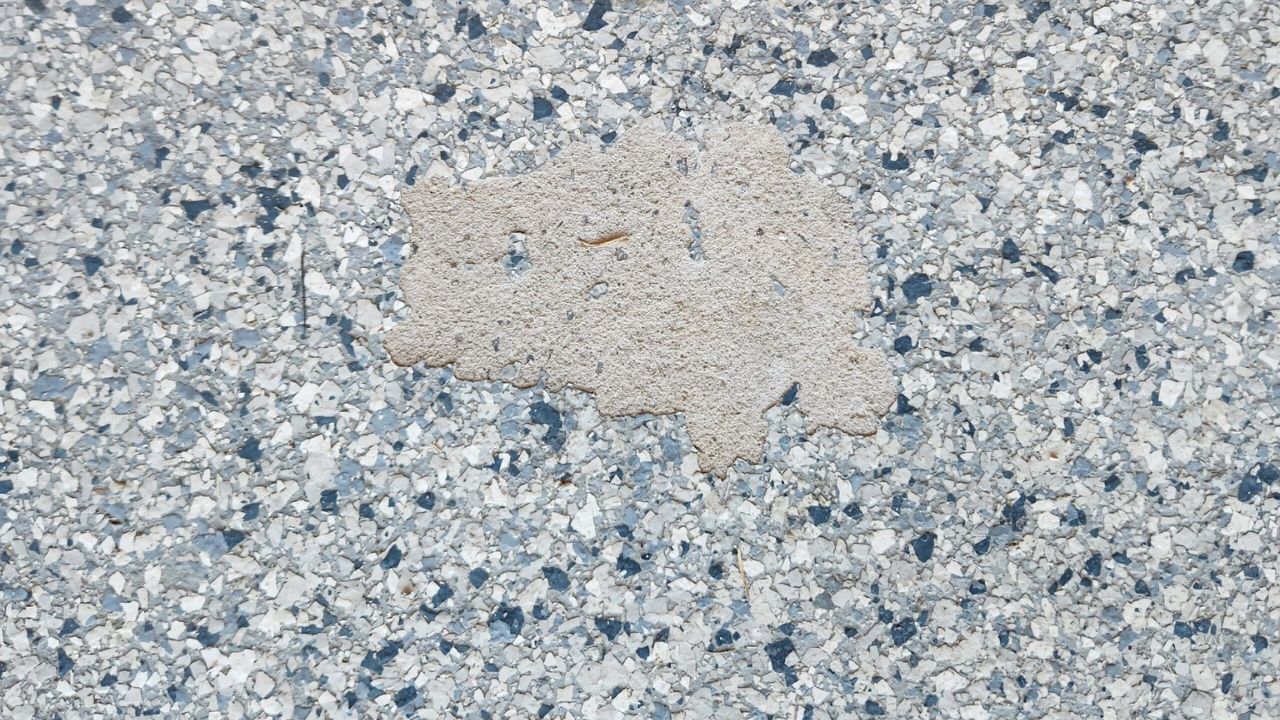When it comes to garage flooring and concrete floors, epoxy flooring have gained significant popularity due to their glossy finish and durability. However, while epoxy garage floors may seem like an attractive choice, there are several factors to consider before making a decision. In this article, we’ll explore seven reasons why epoxy flooring might not be the best fit for your garage.

One of the primary drawbacks of epoxy floooring is their susceptibility to hot tire marks. If your vehicle’s tires are hot from driving, they can leave unsightly marks on the epoxy surface. These marks can detract from the aesthetic appeal of your garage and require frequent cleaning or reapplication of the epoxy coatings.
Epoxy floor coatings can be prone to cracks and chips, especially in environments where heavy objects are dropped or where the floor undergoes significant stress. While epoxy is durable, it may not hold up well under the pressure of dropped tools, equipment, or other heavy items commonly found in garages.
Repairing damaged epoxy garage floors and concrete floor can be a challenge. Matching the color and finish of the existing epoxy flooring is often tricky, resulting in visible patches that can be an eyesore. Unlike other flooring options that allow for easier repairs, epoxy floors may require complete reapplication to maintain a uniform appearance.
Epoxy flooring can become quite slippery when wet, creating potential safety hazards in your garage. Spills of water, oil, or other liquids can turn the epoxy surface into a skating rink, increasing the risk of accidents, especially if you have kids or elderly family members who frequent the space.
The process of applying epoxy garage floor can be time-consuming. It typically involves multiple steps such as cleaning, etching, applying primer, and then the epoxy resin itself. Additionally, drying and curing times are necessary between each layer, extending the installation timeline. If you’re seeking a quicker flooring solution, epoxy floors might not be the best option.
Epoxy flooring can be sensitive to temperature fluctuations. Extreme heat or cold can cause the epoxy to expand or contract, leading to warping or cracking. If your garage experiences significant temperature changes, the longevity and appearance of your epoxy floor coating could be compromised.
While epoxy flooring are generally resistant to many chemicals, certain substances can cause damage. Spills of harsh chemicals or solvents commonly found in garages, like gasoline or brake fluid, can lead to discoloration, staining, or even deterioration of the epoxy coating. If your garage activities involve frequent chemical exposure, alternative flooring options with higher chemical resistance might be more suitable.
Epoxy garage floor are susceptible to discoloration and fading over time, especially when exposed to prolonged sunlight. UV rays can cause the epoxy flooring to yellow or lose its original vibrancy. If your garage receives a significant amount of natural light, or if you live in an area with intense sunlight, the long-term appearance of your epoxy floor might be compromised. If maintaining a consistent and vibrant color is important to you, exploring alternative flooring materials with better UV resistance could be a wiser choice instead of epoxy flooring.
If you wish to learn about Epoxy vs. Polyaspartic.
Stop wasting time on sales meetings.
Save your time and avoid their commission. Get your garage floor coatings installed today at the lowest price.
Check pricing
469-990-9990
Mygaragefloors.com is an online platform with in-house installers dedicated to helping homeowners upgrade their garage floor with a superb Polyaspartic floor coating at the lowest price in the nation.



Lots of companies claim to use Polyaspartic, but they only apply it for the final coat.
Using a mix of Epoxy or Polyurea for the base coat can lead to yellowing and peeling over time.
Insist on a full Polyaspartic system for both base and top coats.